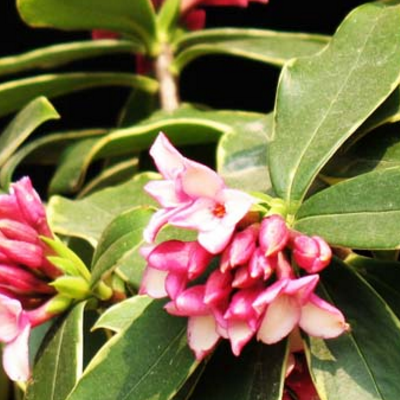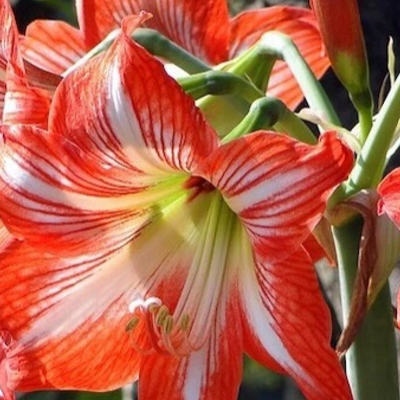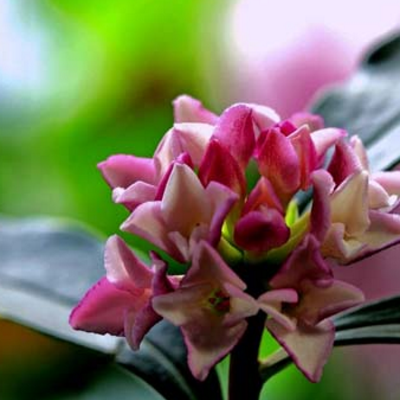What if the leaves of Daphne turn yellow? what if they don't blossom?
Daphne, this is a kind of plant, is a lot of people like breeding, it is said that Daphne is the most fragrant flowers, this Daphne leaves yellow how to do? What if Rui Xiang doesn't blossom:

What if the leaves of Ruixiang turn yellow:
One: the soil is alkaline.
Phnom Penh Daphne is suitable to grow in loose and fertile soil rich in humus. If the selected soil is alkaline, it will cause the leaves of Phnom Penh to turn yellow slowly.
Solution: replace the acidic soil or add ferrous sulfate solution to the basin soil. (clever editor, give you a complete set of soil acidification methods, have a look at it! → _ → soil acidification method)
Two: the sun is too strong
Daphne in Phnom Penh likes the sun, but is afraid of the hot sun. In summer, plants should be placed in a cool and ventilated environment, or in an environment without direct sunlight. If the sun shines too hard or there is no sunlight, it will cause the leaves to turn yellow.
Solution: put Phnom Penh Daphne in a place with plenty of astigmatism.
Three: the temperature is too low
The drought resistance of Phnom Penh Daphne is poor, if the temperature is too low, the growth of the plant is inhibited, and the leaves are easy to yellowing and falling off.
Solution: the potted plant of Daphne odorifera in Phnom Penh should be moved indoors before Frosts Descent, and the temperature should not be lower than 5 ℃.
Four: too much water
Phnom Penh Daphne likes to be afraid of waterlogging, and pot maintenance should control the amount of water. When the basin soil is too wet, it is easy to appear root rot and stem rot, resulting in yellowing leaves.
Solution: replant with clean sterilized culture soil, put it in a cool and ventilated place and water it reasonably.
Five: improper fertilization
Phnom Penh Ruixiang likes fertilizer, especially mature organic fertilizer, but the amount should be good, fertilization should be diligent. If you fertilize too much and do not water in time, it is easy to cause fertilizer damage, resulting in Phnom Penh Daphne leaves yellowing.
Solution: reasonable fertilization, choose mature bean cake fertilizer and water, and dilute it before fertilization.
Six: diseases and insect pests
Phnom Penh Ruixiang improper maintenance is easy to be disturbed by diseases and insect pests, Fusarium wilt or leaf spot disease is, the leaves will be yellow and dry.
Solution: during the onset of the disease, timely spraying agents, once a week, continuous spraying or root irrigation for 5 or 6 times, the effect will be more obvious.
What if Rui Xiang doesn't blossom:
The flowering period of Phnom Penh Daphne is from February to March, but there are three reasons why it does not bloom:
1. High humidity
The main reason is too much watering, especially autumn, autumn is the period of flower bud differentiation, too much watering leads to incomplete flower bud differentiation, it is difficult to form a complete flower bud.
2. Lack of light
The flowering time of Phnom Penh incense is in late spring and early winter, so the maintenance of autumn and winter is very important, the lack of sunlight leads to the lack of nutrients in the plant itself, and it is difficult to grow quickly in spring, let alone to produce the nutrients needed for flowering.
3. Excessive nitrogen fertilizer
Too much nitrogen fertilizer will promote the rapid growth of branches and leaves, especially in spring, sprouting vigorously, breaking through the leaf buds formed in late autumn and early winter, crazy long leaves, lack of flower buds, it is difficult to blossom.
Therefore, according to the above analysis, to ensure that Phnom Penh Daphne blossoms, but also in autumn, to avoid the emergence of the above three points, flowering is still very simple.
This is the reason why the leaves of Ruixiang turn yellow and do not blossom. Now you know what to do!
How does Phnom Penh Daphne cultivate Phnom Penh Daphne leaves turn yellow?
Phnom Penh Daphne is not only a traditional famous flower in China, but also a famous flower in the world. Phnom Penh Daphne is also known as Daphne, sleeping incense and dew nail. Next, let's take a look at the reproduction of Phnom Penh Daphne.
Basic information of Ruixiang in Phnom Penh:
Phnom Penh Daphne is not only a traditional flower in China, but also a famous flower in the world. In the history of modern horticulture, it is regarded as the three treasures of horticulture together with Changchun monk Gentleman and Japanese five-needle theory. Phnom Penh Ruixiang is famous for its "color, fragrance, appearance and rhyme", leaving behind the singing of "peony flowers are the best in Phnom Penh".
Phnom Penh Daphne is a variety of Daphne odora, which belongs to the evergreen shrub of Daphne. Fleshy roots. Leaves densely whorled oval, about 5-6cm, 2-3cm wide, smooth and thick, leathery, both sides glabrous, surface dark green, leaf back light green, leaf margin golden yellow, petiole thick and short; terminal inflorescence, perianth tube-shaped, upper four-lobed diameter about 1.5cm, each flower consists of dozens of florets, blooming from outside to inside, flowering for more than two months, during the Spring Festival, the flower color is purple and bright, and the fragrance is rich.
The culture method of Phnom Penh Daphne:
1. Soil: potted Phnom Penh Daphne, pot soil should be fertile and loose, rich in humus with acid rotten leaf soil, mixed with appropriate amount of river sand and mature cake fertilizer.
2, watering: Phnom Penh Ruixiang root is fleshy, usually maintenance and management should pay special attention to control watering, such as too much watering, basin soil is too wet for a long time, easy to cause rotten roots. After the rain, the stagnant water in the basin must be poured out in time.
3. Sunshine: although Phnom Penh Daphne likes semi-shade, it should be placed in a sunny environment in winter and spring. During the growth period, such as sufficient light and suitable fertilizer effect, it can make Ye Dai and flowers strong, and it should be placed in a cool place with good ventilation in summer. spray water to cool down when hot.
Temperature: after Frosts Descent, Phnom Penh Daphne moved into the sunny part of the room, the room temperature was kept at about 5 ℃, and the watering was controlled; the water content of the basin soil was controlled at about 45% before it could pass the winter.
5. Fertilization: Phnom Penh Daphne prefers fertilizer, and thin liquid fertilizer should be irrigated every 10 days or so in the growing season. It is appropriate to apply sparse pancake fertilizer and water before and after flowering.
6. Insect pests: the main pests that harm Phnom Penh Daphne are aphids and shell insects, which mostly appear in the dry and hot climate and should be controlled as soon as possible. The disease is mainly caused by virus mosaic disease, infected plant leaves appear color spots and deformities, poor flowering and growth stagnation, should be found to root out and burn with fire.
7. Pruning: Phnom Penh Daphne has numerous branches, strong germination, resistance to pruning and pruning after flowering.
The leaves of Phnom Penh Daphne turn yellow.
1. Soil alkali: potted Phnom Penh Daphne should use fertile and loose, humus-rich acid-rich saprophytic soil. If the selected soil is alkaline, it will cause the leaves of Phnom Penh to yellowing and falling. Solution: change the basin soil or apply ferrous sulfate solution to ensure the acidity of the soil.
2, the sun is too strong: Phnom Penh Ruixiang is afraid of the hot summer sun, summer should be placed on a cool and ventilated flower rack, or in a place where there is no direct sunlight, the sun shines too hard or causes the leaves to turn yellow. Solution: put Phnom Penh Daphne in a place with plenty of astigmatism for breeding.
3. The temperature is too low: the cold resistance of Phnom Penh Daphne is poor. If the temperature is too low, the leaves will yellow and fall, and the plants will also be damaged by freezing. Solution: the potted plant of Daphne odorifera in Phnom Penh should be moved indoors in front of Frosts Descent and keep the room temperature not less than 5 ℃.
Is Phnom Penh incense poisonous?
Ruixiang is very fragrant and not poisonous. if you can smell it, you can put it in the bedroom, but it's hard to say. Of course, it has its disadvantages as well as its benefits. Smelling more is not good for the human body. Isn't there an old saying in China? Things go to extremes. When one thing goes too far, the good will become bad, and the bad may become good.
The function of Phnom Penh Daphne
1. Viewing: Phnom Penh Daphne has high ornamental value, graceful tree posture, natural branches, neat and bright leaves, green and green, rich flower fragrance and long flowering period. it is a kind of precious flower with excellent appearance, color, fragrance and rhyme, which is favored by the majority of flower lovers.
2. Medicine: Phnom Penh Daphne not only has ornamental value, but also has high medicinal value. Phnom Penh Daphne contains daphnetin, and its roots, stems, leaves and flowers can be used as medicine. The effects of reducing inflammation and relieving pain, promoting blood circulation and removing blood stasis and dispersing knots have been included in the "Dictionary of traditional Chinese Medicine".
3. Gifts: Ruixiang in Phnom Penh is famous for its "color, fragrance, appearance and rhyme". It opens before and after the Spring Festival, full of branches, clusters, flowers and rich fragrance, which adds a sign of auspiciousness to the Spring Festival, and it is also one of the choices for many people to give gifts among relatives and friends.
If you want to know more about it, you can continue to follow the No.1 Home Network.
Summary of the reasons for the yellowing of Phnom Penh Daphne leaves, and the solutions for Phnom Penh Daphne, we should be no stranger to it! Phnom Penh Daphne is a traditional Chinese flower with a yellowish edge and green in the middle. When it blossoms, Phnom Penh Daphne is the most beautiful, with flowers in clusters, giving off a delicate fragrance. Today, I will take you to learn about the yellowing leaves of potted Daphne odora var Phnom Penh.
1. Soil alkalinity.
Phnom Penh Daphne is suitable to grow in loose and fertile soil rich in humus. If the selected soil is alkaline, it will cause the leaves of Phnom Penh to turn yellow slowly.
Solution: replace the acidic soil or add ferrous sulfate solution to the basin soil.
2. The sun is too strong
Daphne in Phnom Penh likes the sun, but is afraid of the hot sun. In summer, plants should be placed in a cool and ventilated environment, or in an environment without direct sunlight. If the sun shines too hard or there is no sunlight, it will cause the leaves to turn yellow.
Solution: put Phnom Penh Daphne in a place with plenty of astigmatism.
3. The temperature is too low
The drought resistance of Phnom Penh Daphne is poor, if the temperature is too low, the growth of the plant is inhibited, and the leaves are easy to yellowing and falling off.
Solution: the potted plant of Daphne odorifera in Phnom Penh should be moved indoors before Frosts Descent, and the temperature should not be lower than 5 ℃.
4. Too much water
Phnom Penh Daphne likes to be afraid of waterlogging, and pot maintenance should control the amount of water. When the basin soil is too wet, it is easy to appear root rot and stem rot, resulting in yellowing leaves.
Solution: replant with clean sterilized culture soil, put it in a cool and ventilated place and water it reasonably.
5. Improper fertilization
Phnom Penh Ruixiang likes fertilizer, especially mature organic fertilizer, but the amount should be good, fertilization should be diligent. If you fertilize too much and do not water in time, it is easy to cause fertilizer damage, resulting in Phnom Penh Daphne leaves yellowing.
Solution: reasonable fertilization, choose mature bean cake fertilizer and water, and dilute it before fertilization.
6. Diseases and insect pests
Phnom Penh Ruixiang improper maintenance is easy to be disturbed by diseases and insect pests, Fusarium wilt or leaf spot disease is, the leaves will be yellow and dry.
Solution: during the onset of the disease, timely spraying agents, once a week, continuous spraying or root irrigation for 5 or 6 times, the effect will be more obvious.
The above are the reasons and solutions for the yellowing of Phnom Penh Daphne leaves. I hope it can be helpful to the majority of flower friends. Please continue to pay attention to the succulent flower bed and learn more about flower conservation.
- Prev

What if Zhu Dinghong only grows leaves but does not blossom? what if the leaves are too long?
Zhu Dinghong, this is a kind of plant, is very easy to feed, but also super beautiful, there is also a name called Guilan
- Next

Why does Ruixiang die after flowering? how to prolong the flowering period?
Ruixiang, this kind of plant is liked by many people. It is so beautiful. Why does this Ruixiang die after it blossoms? How does Daphne prolong its flowering period: why does Phnom Penh Daphne die after flowering: because it needs to stop fertilizing when it blossoms, sprouts branches and leaves after flowering, produces new branches, and consumes a lot of nutrients.
Related
- Fuxing push coffee new agricultural production and marketing class: lack of small-scale processing plants
- Jujube rice field leisure farm deep ploughing Yilan for five years to create a space for organic food and play
- Nongyu Farm-A trial of organic papaya for brave women with advanced technology
- Four points for attention in the prevention and control of diseases and insect pests of edible fungi
- How to add nutrient solution to Edible Fungi
- Is there any good way to control edible fungus mites?
- Open Inoculation Technology of Edible Fungi
- Is there any clever way to use fertilizer for edible fungus in winter?
- What agents are used to kill the pathogens of edible fungi in the mushroom shed?
- Rapid drying of Edible Fungi

